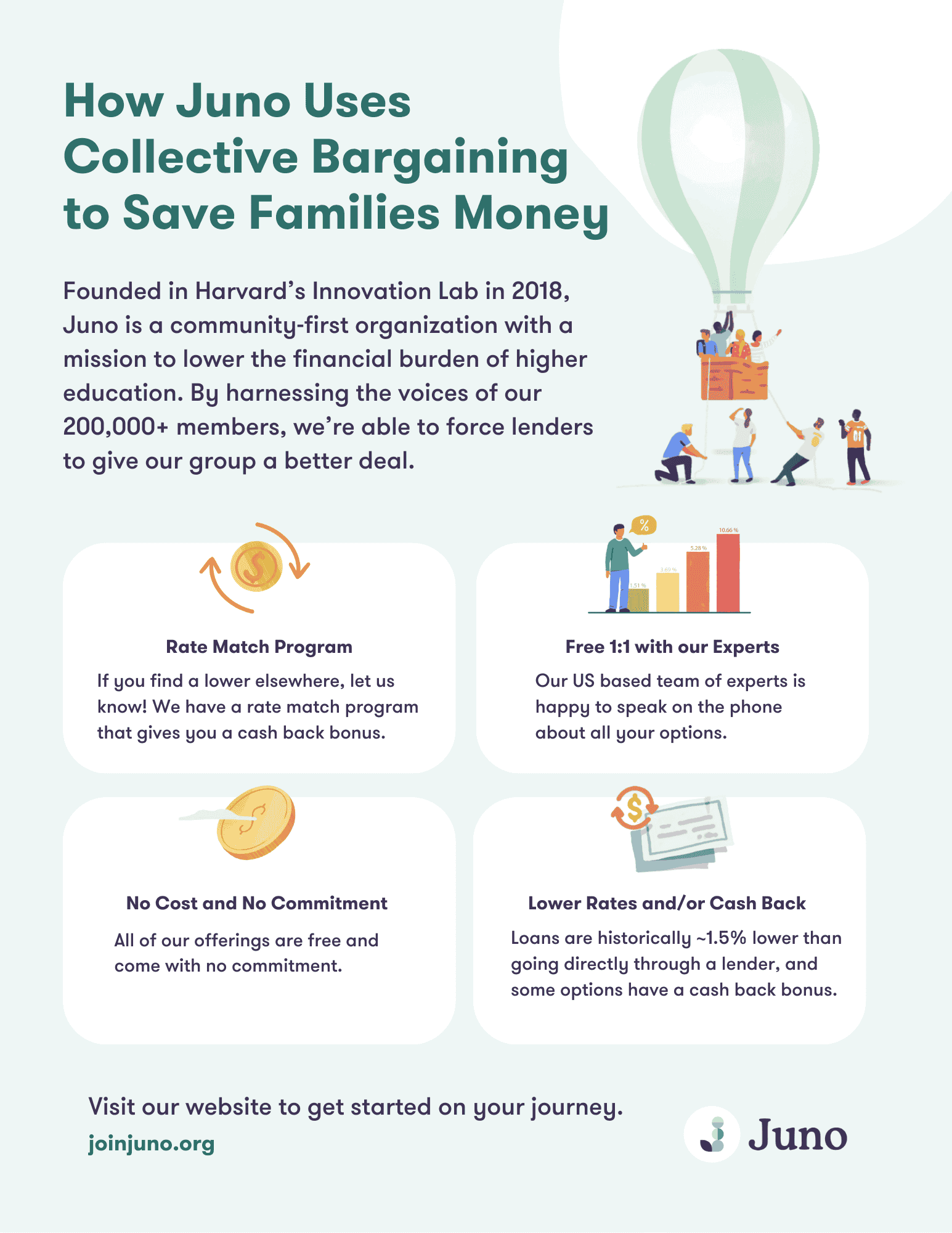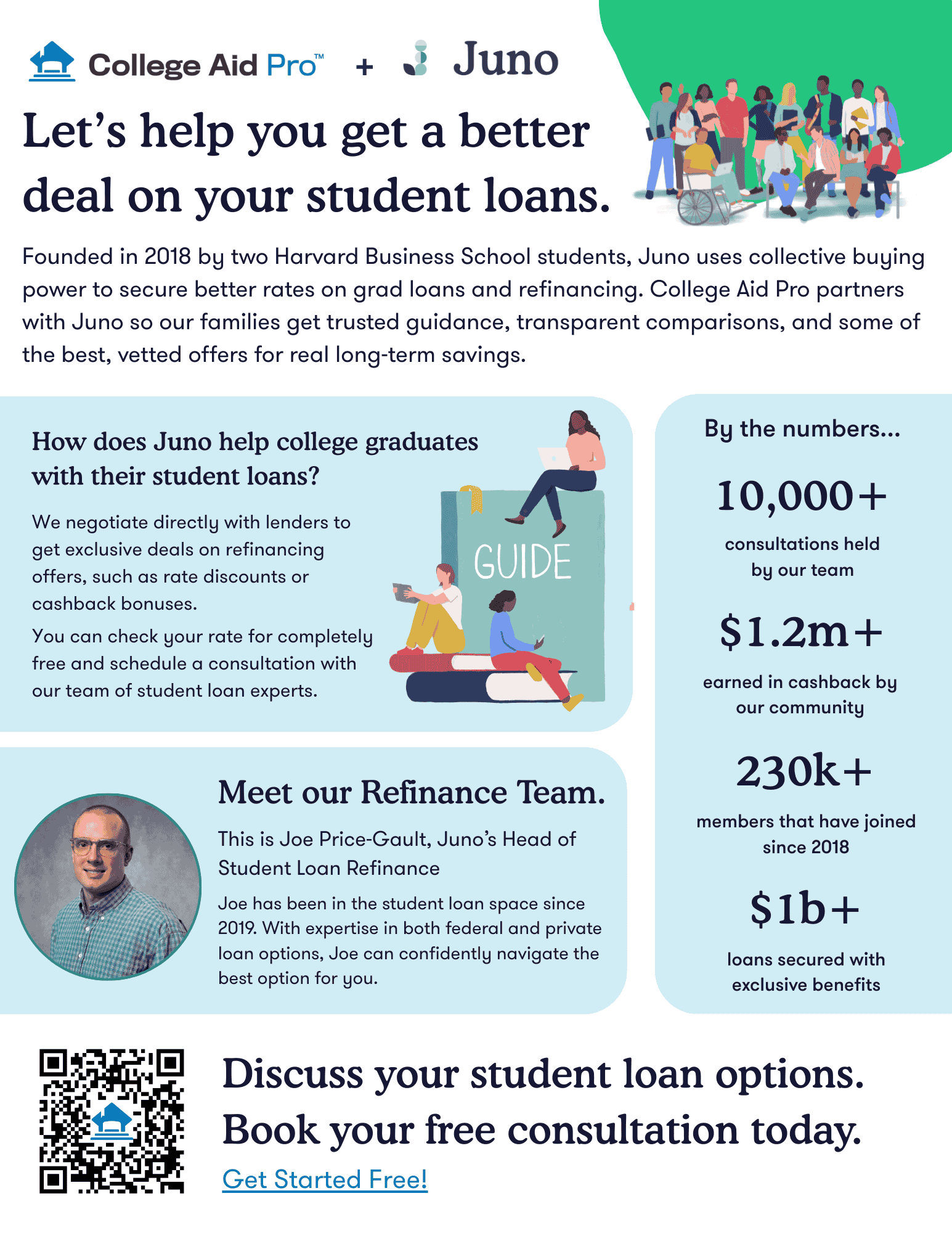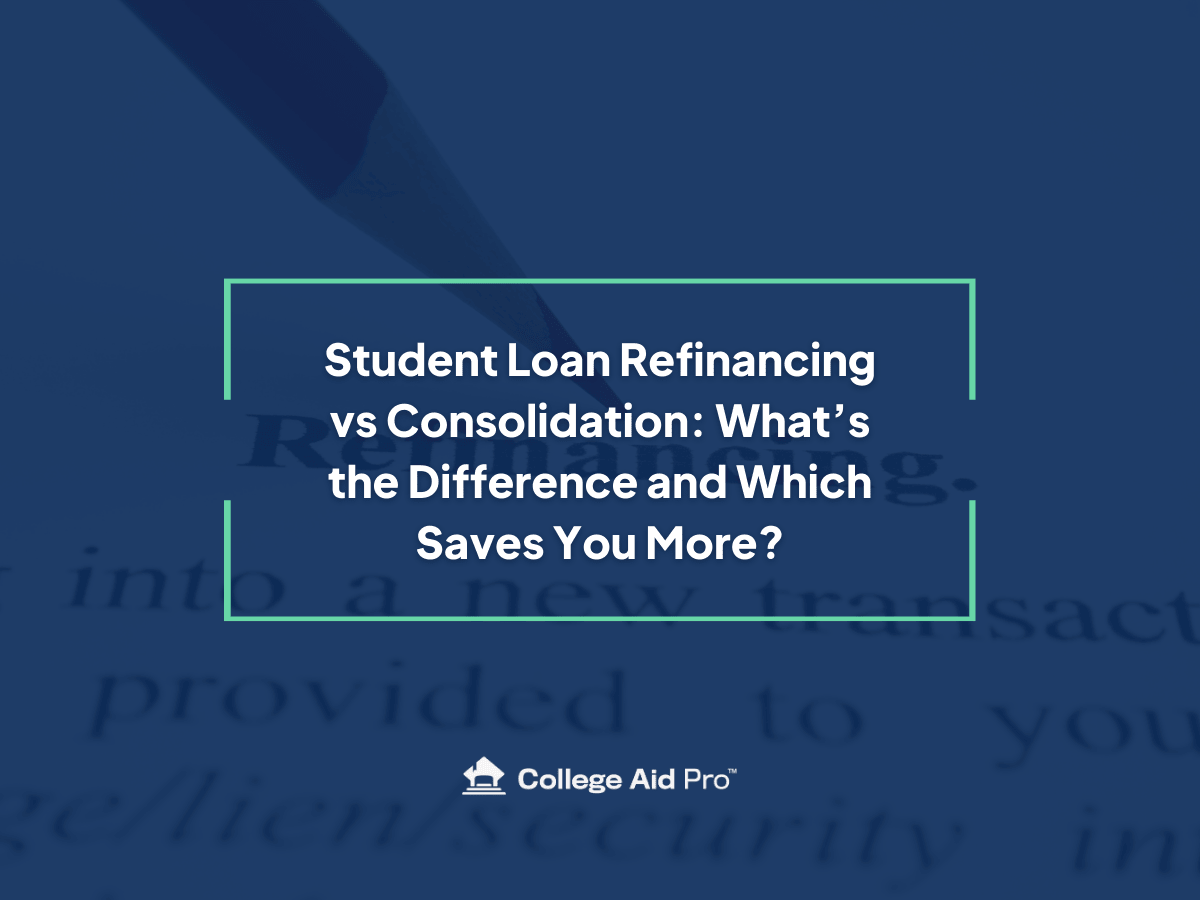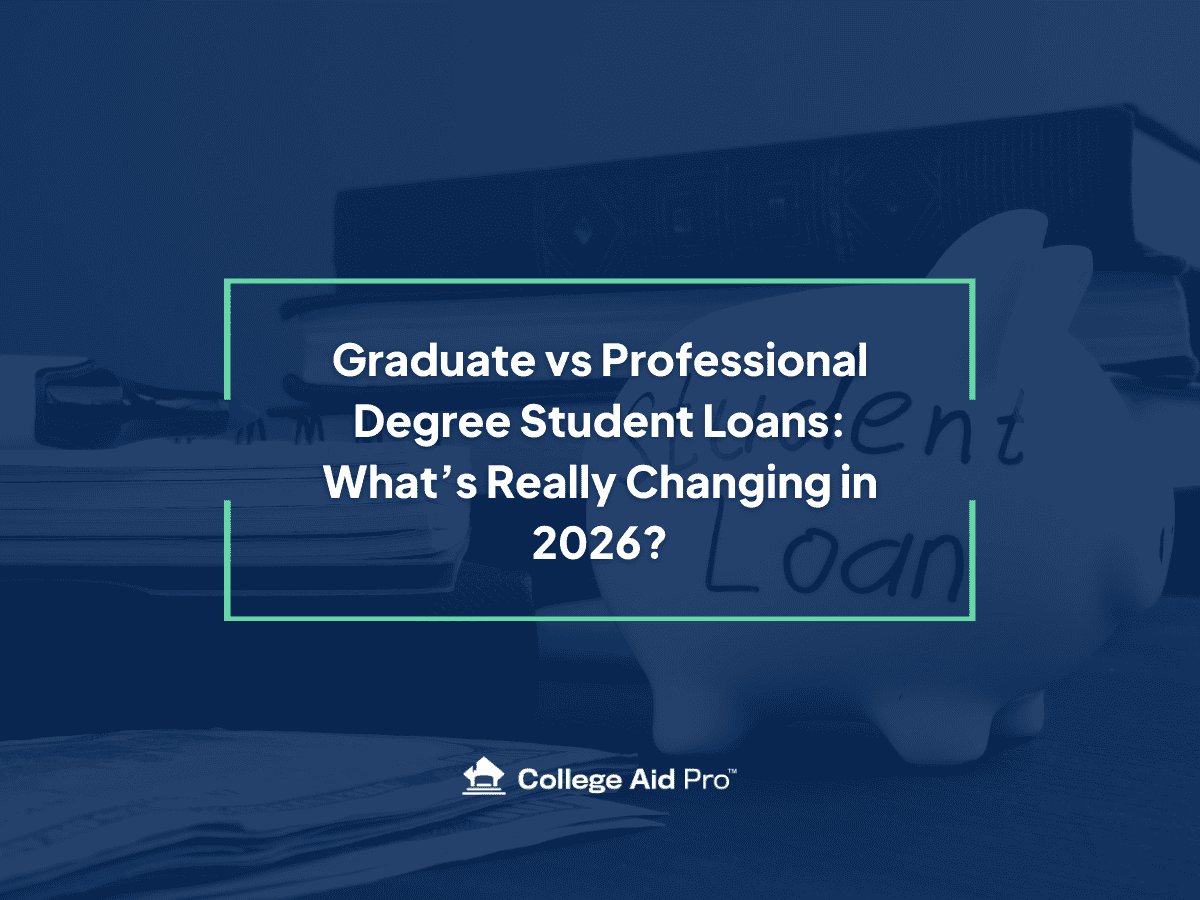Student Loan Refinancing vs Consolidation: What’s the Difference and Which Saves You More?
If you’ve ever Googled student loan refinancing vs consolidation and thought, “Wait… aren’t those the same thing?”—you’re definitely not alone.
Both options promise one monthly payment and a little less chaos. But under the surface, they work very differently, affect your interest rate differently, and come with very different pros and cons—especially if you have federal loans.
And if you decide refinancing is the right move, we’ll also show you how our partnership with Juno can help you shop smarter for better refinancing deals.

Student Loan Refinancing vs Consolidation: The Big Picture
Let’s start with the high-level view.
Both student loan refinancing and student loan consolidation can:
- Combine multiple loans into one monthly payment
- Simplify your life so you’re not juggling several due dates
But that’s where the similarities end.
Here’s the core difference in the student loan refinancing vs consolidation decision:
- Consolidation = A federal move that combines federal loans into one new federal loan. It’s about simplicity and access to certain plans and programs—not about scoring a dramatically lower rate.
- Refinancing = A private move where a private lender pays off your existing loans (federal, private, or both) and replaces them with one new private loan, often at a potentially lower interest rate.
Same destination (one payment), totally different roads to get there.
What Is Federal Student Loan Consolidation?
When the government talks about consolidation, it’s referring to a Federal Direct Consolidation Loan.
What consolidation actually does
With consolidation, you:
- Combine multiple federal student loans into one new federal loan
- End up with one servicer, one bill, one due date
The main reasons borrowers choose consolidation:
- To simplify multiple loans into one
- To make certain loans eligible for Public Service Loan Forgiveness (PSLF)
- To access specific Income-Driven Repayment (IDR) plans
- To help resolve defaulted federal loans and get back into good standing
Does consolidation lower your interest rate?
This is where expectations and reality sometimes clash.
- Your new interest rate is the weighted average of your existing federal loan rates
- Then it’s rounded up to the nearest 1/8 of a percent
So in the student loan refinancing vs consolidation conversation, consolidation is not the option you choose if your main goal is just “lowest possible rate.” It’s mainly about eligibility and organization, not big interest savings.
Who’s the lender?
- Your lender remains the U.S. Department of Education
- You stay inside the federal loan system, with all the federal protections that come with it
Credit requirements
- No credit check
- No minimum score
- No co-signer required
If you have eligible federal loans, you can usually consolidate regardless of your credit.
What Is Student Loan Refinancing?
Now let’s flip to the other side of student loan refinancing vs consolidation: refinancing.
What refinancing actually does
With student loan refinancing:
- A private lender pays off your existing student loans
- Those loans can be federal, private, or a mix
- You end up with one new private loan and one monthly payment to that new lender
Borrowers typically refinance to:
- Lower their interest rate
- Lower their monthly payment (often by extending the term)
- Change repayment terms to pay off debt faster or free up monthly cash flow
- Remove a co-signer from an existing loan
How the interest rate is determined
Unlike consolidation, student loan refinancing can actually cut your rate—if you qualify.
Your new rate is based on:
- Your credit score
- Your income and debt-to-income ratio
- Current market conditions
If your financial profile is strong, refinancing can significantly reduce your interest rate and total cost over time.
Who’s the lender?
- Your new lender is private (bank, credit union, or online lender)
- Any federal loans you refinance become private loans permanently
Credit requirements
Refinancing is more selective than consolidation:
- There is a credit check
- You’ll generally need good to excellent credit for the best rates
- A steady income (or strong co-signer) helps secure more competitive offers
The Trade-Off: Federal Protections You Might Lose
Here’s the most important piece of the student loan refinancing vs consolidation puzzle:
Once you refinance a federal loan into a private loan, it can’t go back to being a federal loan.
That means you give up federal benefits on those refinanced loans, including:
- Public Service Loan Forgiveness (PSLF) eligibility
- Access to Income-Driven Repayment (IDR) plans like SAVE and others
- Federal forbearance and deferment options, which tend to be more generous and flexible
- Potential access to future federal relief programs, like temporary payment pauses or new forgiveness initiatives
Private lenders may offer their own forbearance or hardship options, but they’re not required to match federal protections—and policies vary from lender to lender.
This is why refinancing can be fantastic for the right borrower—but risky for someone counting on federal benefits.
How Our Partnership with Juno Helps You Refinance Smarter

If, after weighing student loan refinancing vs consolidation, you decide refinancing might be the right path—especially for private loans or federal loans you’re comfortable converting—this is where our partnership with Juno shines.
What Juno does

Juno uses group buying power to help borrowers access more competitive student loan refinancing offers. Instead of shopping alone, Juno:
- Brings together a large community of borrowers
- Negotiates with select lenders for rate discounts, cash-back offers, or other perks
- Lets you access those negotiated deals for free (lenders, not you, compensate Juno)
- Curates a short list of competitive refinancing options, so you’re not digging through endless lender websites
The idea is simple: if you’re going to refinance and you qualify, you shouldn’t land at the back of the line—you should have access to some of the stronger offers on the market.
Why College Aid Pro partnered with Juno
At College Aid Pro, our whole world revolves around:
- Paying less for college
- Protecting your long-term financial health
- Making sure you understand your options before you sign anything
We teamed up with Juno because:
- Our missions align: both of us want to help borrowers lower the real cost of education-related debt.
- Juno aims to secure offers that can be better than publicly available rates from the same lenders.
- They save you time by letting you compare multiple competitive refinancing options in one place.
We don’t set rates and we don’t originate loans. Our role is to help you decide where student loan refinancing vs consolidation fits into your bigger financial picture—and to connect you with partners like Juno when refinancing looks like a smart move.
How Refinancing Works with College Aid Pro + Juno 
Here’s how the process usually looks when you explore refinancing through our Juno partnership:
Step 1: Clarify your goal
Before you apply, decide what you actually want:
- A lower monthly payment?
- A lower total cost over the life of the loan?
- A faster payoff date?
- Or a combination of these?
Knowing your goal makes evaluating offers much easier.
Step 2: Use our Juno link to check rates
When you’re ready to explore:
- Use our College Aid Pro + Juno link
- Join Juno for free
- Access negotiated student loan refinancing offers from participating lenders
- See potential rates using an initial soft credit check, so your credit score isn’t dinged just for shopping
And no—checking your rates doesn’t lock you into refinancing.
Step 3: Compare and decide
You’ll likely see several options with:
- Different interest rates and APRs
- Various term lengths
- Different monthly payment amounts
- Perks like autopay discounts or specific hardship option
Ask yourself:
- Is this rate meaningfully lower than what I’m paying now?
- Does the monthly payment fit my budget comfortably?
- How much interest will I pay over the full term?
- Am I giving up any federal protections I still need on the loans I’m refinancing?
If an offer clearly moves you toward your goals—and you’re not sacrificing benefits you rely on—it may be worth taking the next step. If not, you can walk away.
Student Loan Refinancing vs Consolidation: Which Should You Choose?
Here’s a quick cheat sheet to wrap it up.
Consolidation is usually best if:
- You want one federal payment, but want to stay in the federal system
- You’re pursuing PSLF
- You need certain IDR plans that require Direct Loans
- You’re trying to resolve defaulted federal loans
- You value flexibility and forgiveness more than squeezing out every last bit of interest savings
Refinancing (especially via Juno) is usually best if:
- You have high-interest private loans
- You have strong credit and income
- You’re not counting on PSLF or other federal forgiveness programs
- You’re comfortable giving up federal benefits on the loans you refinance
- You want to reduce your rate, change terms, or remove a co-signer
At the end of the day, the student loan refinancing vs consolidation decision is about matching the tool to your situation. Consolidation keeps you in the federal world with more protections; refinancing can unlock serious savings when the timing, credit, and goals line up.
Our job at College Aid Pro is to help you sort through all of that—and when refinancing makes sense, to connect you with partners like Juno so you’re not going it alone.



